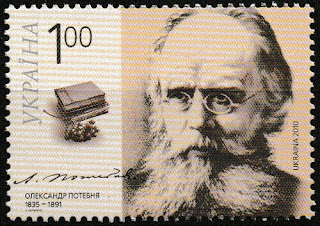Here are some events that happened on September 22nd. It could be an event or a person that died or was born on that day
1791 Born: Michael Faraday, English physicist and chemist (d. 1867)
1835 Born: Alexander Potebnja, Ukrainian linguist and philosopher (d. 1891)
Alexander Potebnja (Russian: Алекса́ндр Афана́сьевич Потебня́; Ukrainian: Олекса́ндр Опана́сович Потебня́) was a Russian Imperial and Ukrainian linguist, philosopher and panslavist, who was a professor of linguistics at the Imperial University of Kharkov. He is well known as a specialist in the evolution of Russian phonetics.
He constructed a theory of language and consciousness that later influenced the thinking of his countryman the Psychologist Lev Vygotsky. His main work was Language and Thought (Russian: Мысль и язык) (1862). He also publisched a number of works on Russian Grammar, on the History of the Sounds in the Russian Language and on Slavic folk poetry, furthermore he translated a short fragment of Homer's Odyssey into Ukrainian. Potebnja was a corresponding member of the St. Petersburg Academy of Sciences, the foremost academic institution in the Russian Empire.
Stamp from the Ukraine depicting Alexander Potebnja
1896 – Queen Victoria surpasses her grandfather King George III as the longest reigning monarch in British history.
Victoria (Alexandrina Victoria; 24 May 1819 – 22 January 1901) was Queen of the United Kingdom of Great Britain and Ireland from 20 June 1837 until her death. She adopted the additional title of Empress of India on 1 May 1876. Known as the Victorian era, her reign of 63 years and seven months was longer than that of any of her predecessors. It was a period of industrial, cultural, political, scientific, and military change within the United Kingdom, and was marked by a great expansion of the British Empire.
Victoria was the daughter of Prince Edward, Duke of Kent and Strathearn (the fourth son of King George III), and Princess Victoria of Saxe-Coburg-Saalfeld. After both the Duke and his father died in 1820, she was raised under close supervision by her mother and her comptroller, John Conroy. She inherited the throne aged 18 after her father's three elder brothers died without surviving legitimate issue. Though a constitutional monarch, privately, Victoria attempted to influence government policy and ministerial appointments; publicly, she became a national icon who was identified with strict standards of personal morality.
Victoria married her cousin Prince Albert of Saxe-Coburg and Gotha in 1840. Their children married into royal and noble families across the continent, earning Victoria the sobriquet "the grandmother of Europe" and spreading haemophilia in European royalty. After Albert's death in 1861, Victoria plunged into deep mourning and avoided public appearances. As a result of her seclusion, republicanism in the United Kingdom temporarily gained strength, but in the latter half of her reign, her popularity recovered. Her Golden and Diamond Jubilees were times of public celebration. She died on the Isle of Wight in 1901. The last British monarch of the House of Hanover, she was succeeded by her son Edward VII of the House of Saxe-Coburg and Gotha.
Great Britain Penny Black stamps, the first stamps issued in the world
Stamp from India and Great Britain showing Empress Victoria









No comments:
Post a Comment